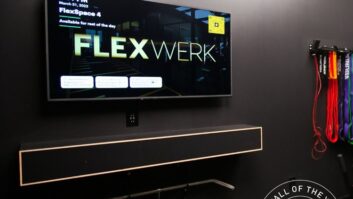“For want of a nail the shoe was lost.
For want of a shoe the horse was lost.
For want of a horse the rider was lost.
For want of a rider the message was lost.
For want of a message the battle was lost.
For want of a battle the kingdom was lost.
And all for the want of a horseshoe nail.”
—Classic Proverb

Image: Thinkstock
I was on a job yesterday where I spent almost two hours troubleshooting a non-working keypad. I was able to trace down the wiring and tone it, but just couldn’t get it to power on or work. I double-checked the terminations and connections, but couldn’t get it to work. After tracing all the wiring routes behind the rack, it turned out that a single Cat-5 wire had broken inside an Elk “beanie” connector where a previous installer had spliced multiple devices together. After cutting all the wiring free and carefully re-terminating it, the keypad worked and I was able to move on.
On most install jobs, it’s generally not the big things like massive component failures, corrupt programming, or just being unable to get a system to work that cause us problems. It’s usually the dumb, small things that likely could have been prevented with a bit of forethought that leave you scratching your head and often spending hours trying to run down. And enough of these small things going wrong can certainly either take down the whole system or result in the erosion of client trust in your company and the system you installed.
Here are five areas where you need to be mindful of the little things:
1. Customer Training
Probably the single biggest cause of most system issues is the customer themselves. When something doesn’t correctly, many customers (bizarrely) revert to just randomly jabbing buttons trying to restore the problem, often creating more havoc than whatever was wrong to begin with. While it isn’t possible to train a customer for every potential issue, you can certainly prep them for the most likely things that could go wrong and how to address them. Small things like checking power and input status of certain devices, or just hitting the OFF button on the remote and restarting the activity. Allocating some time at the end of the job to thoroughly demonstrate and go over system operation can be some of the best time spent on the job!
2. Documentation
The importance of proper wire labeling and system documentation really can’t be stressed enough. At some point you are going to have to go back to a job, and if the system hasn’t been properly documented, you will be starting over from step one. This is even truer if you have multiple installers, or when installers quit and someone else is forced to go elbow-deep into a system they’ve never seen before. On the job I mentioned in the beginning, the homeowner went through a massive remodel without contacting us, and the contractor just ripped all of the wiring out and left us a huge bundle of cabling in the closet. Fortunately, we had labeled all the keypad and speaker cables, which made it much easier to reconnect the 16-room audio system.
3. Wiring Issues
Forgetting to pull a wire to a location or having a wire damaged by another trade might happen, but hopefully these are rare occurrences. We’ve tried to minimize the “forgetting part” by creating wire checklists for jobs, indicating what wire runs need to be pulled to each location in the house, and then having the tech that pulls them check them off. At the end of the job, several people will walk the job and check against the list to make sure nothing was missed. Also, with the low cost and versatility of Category-rated wiring, we’ve started pulling extra runs to primary locations in the house, as well as up into the attic (or crawl space) where the wire could be retrieved in the future “just in case.” And insisting that we’re the last trade to be on the job has helped with the damage issues.
Few things are as annoying as trying to locate a wire that has been cut by a landscaper or finding a buried splice connection that has become corroded. In a large system, this can be a lengthy process of trying to locate the problem and then fix it. As much as it sucks, we try to bury wiring in conduit underground whenever possible. Inevitably, the times when we don’t is when the gardener will get especially zealous with the edger and chop our wire to bits. We also went to a gel-filled 3M direct-bury splice kit connector for making our outdoor speaker connections. These ends are a bit pricy and take some time to terminate, but we’ve never had to go back and redo one, and that makes them invaluable.
4. Thermal Issues
Heat kills gear. This isn’t even a concept that surprises customers, as they understand that hot electronics are unhappy electronics. Even still, it amazes me how many times we still go behind a DIY job–or one from another company–to find that all the gear is packed together in a hermetically sealed cabinet. You open the door and feel a blast of hot air gasp out as dying electronics silently beg for mercy. Besides shortened lifespan, overheating leads to lock-ups and shutdowns. Granted, most customers don’t want to give us the space that our gear truly deserves, but we certainly need to fight for the proper location for the electronics or specify cooling systems, like those from Active Thermal Management and Middle Atlantic Products, to insure that things will remain running even during a Star Wars marathon viewing party.
5. Device Reboot Issues
Needing to regularly reboot things like modems, routers, cable boxes, and streaming devices has become part of the modern technology lifestyle. Fortunately, we can also use technology to solve these technological quirks. Using a connected power outlet like a Panamax BlueBOLT, SnapAV-OvrC enabled device, or even a Control4 outlet, it’s a simple proposition to set up a recurring schedule to automatically reboot an outlet. The homeowner will likely never know that devices are rebooting in the wee hours, just that things seem to work more reliably than they ever have before! And the price of these devices has continued to drop to the point where it is almost negligent not to have at least one on every job.
The difference between good and great is often measured in seconds or inches, but it is truly the attention to detail on the small things that will elevate our installs to the next left and make sure that you spend less time fixing and more time finishing!






